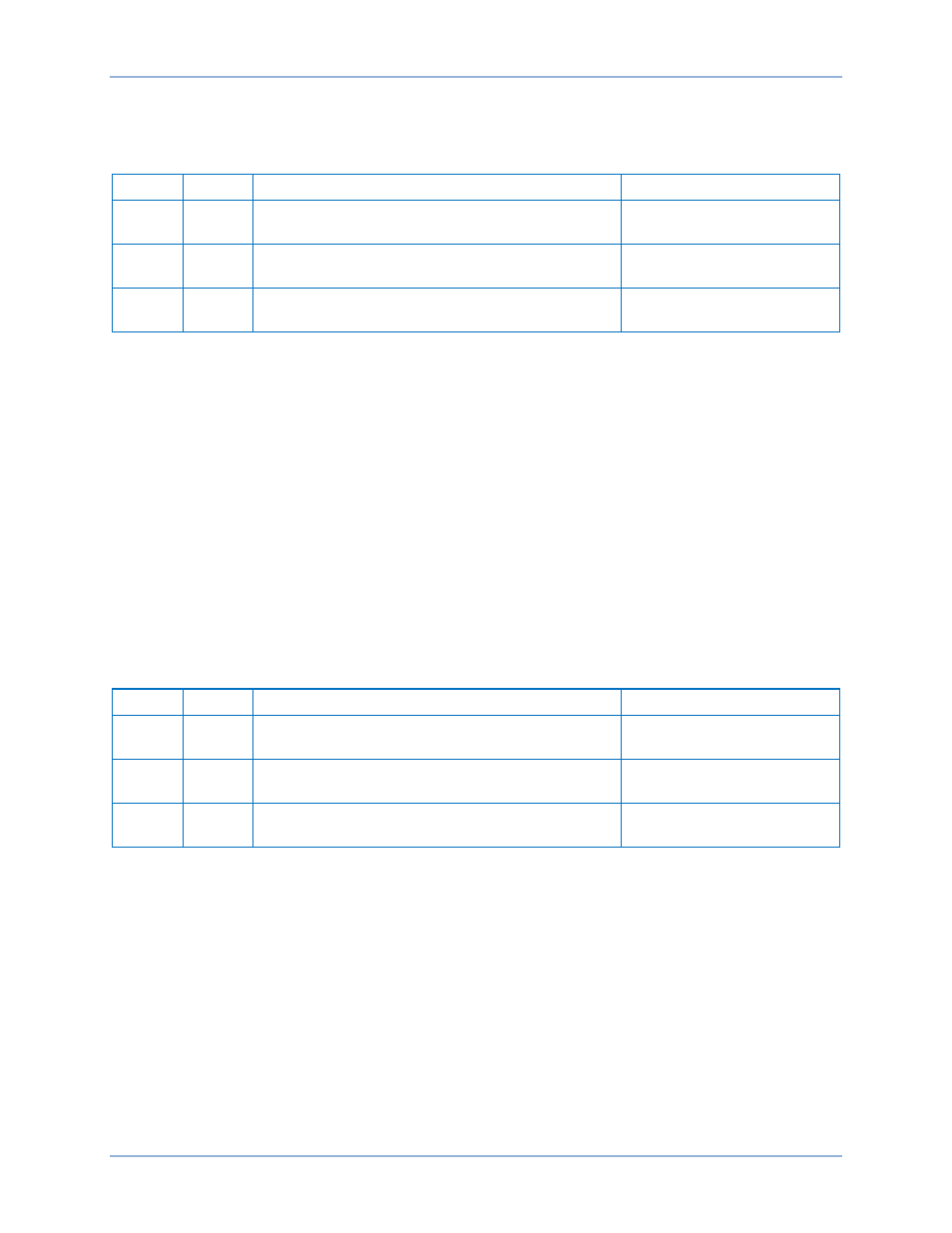Basler Electric BE1-11t User Manual
Page 410

398
9424200995 Rev H
Negative-Sequence Voltage Polarizing, Negative-Sequence Overcurrent Elements
Step 11: Using Table 188 as a guide, send the settings to the BE1-11t.
Table 188. Directional, Negative-Sequence Operational Settings
Setting
Value
BESTCOMSPlus Screen
Description
Pickup
0 A
Protection, Current, Instantaneous Overcurrent
(50-1)
Sets 50-1 pickup to 0 amps
Pickup
0 A
Protection, Current, Instantaneous Overcurrent
(50-2)
Sets 50-2 pickup to 0 amps
Pickup
0.5 A
Protection, Current, Instantaneous Overcurrent
(50-3)
Sets 50-3 pickup to 0.5
amps
Step 12: Apply a 120 Vac, three-phase voltage source at nominal frequency to terminals C13 (A-phase),
C14 (B-phase), C15 (C-phase), and C16 (neutral). Reduce the A-phase voltage to 40 Vac. View
the Metering screen on the front-panel display to verify that negative-sequence voltage is
greater than 1 volt.
Step 13: Set A-phase current source to 0 amps with an angle of 80 degrees lagging (same as negative-
sequence torque angle) and slowly increase the current until OUT3 closes (Negative-Sequence
Pickup current will be approximately 1/3 the applied A-phase current value). Decrease A-phase
current until OUT3 just drops out. Pickup will occur within
±2% of the 50-3 pickup setting (0.4 A
to 0.6 A). Dropout will occur at approximately 95% of the actual pickup value. Verify that there is
a 50-3-67-Neg SEQ target on the front-panel display.
Step 14: With the same voltage still applied, increase the A-phase current until OUT3 closes. Swing the
angle of the applied current +90 degrees and –90 degrees away from the 80-degree negative-
sequence torque angle. Verify that OUT3 opens at approximately 170 degrees lagging and 350
degrees lagging. OUT3 should remain closed from 170 to 180, and continuing through 350
degrees lagging (defined as forward trip direction).
Step 15: Using Table 189 as a guide, send the settings to the BE1-11t.
Table 189. Directional, Neutral Operational Settings
Setting
Value
BESTCOMSPlus Screen
Description
Pickup
0 A
Protection, Current, Instantaneous Overcurrent
(50-1)
Sets 50-1 pickup to 0 amps
Pickup
2.0 A
Protection, Current, Instantaneous Overcurrent
(50-2)
Sets 50-2 pickup to 2.0
amps
Pickup
0 A
Protection, Current, Instantaneous Overcurrent
(50-3)
Sets 50-3 pickup to 0 amps
Step 16: Apply a 120 Vac, three-phase voltage source at nominal frequency to terminals C13 (A-phase),
C14 (B-phase), C15 (C-phase), and C16 (Neutral). Reduce the A-phase voltage to 40 Vac.
View the Metering screen on the front-panel display to verify that negative-sequence voltage is
greater than 1 volt.
Step 17: Set A-phase current source to 0 amps with an angle of 80 degrees lagging (same as negative-
sequence torque angle) and slowly increase the current until OUT2 closes. Decrease A-phase
current until OUT2 just drops out. Pickup will occur within
±2% of the 50-2 pickup setting (1.96 A
to 2.04 A). Dropout will occur at approximately 95% of the actual pickup value. Verify that there
is a 50-2-67-Residual target on the front-panel display.
Step 18: With the same voltage still applied, increase the A-phase current until OUT2 closes. Swing the
angle of the applied current +90 degrees and –90 degrees away from the 80-degree negative-
sequence torque angle. Verify that OUT2 opens at approximately 170 degrees lagging and 350
degrees lagging. OUT2 should remain closed from 170 through 80 to 350 degrees lagging
(defined as forward trip direction).
Directional Overcurrent (67) Test
BE1-11t